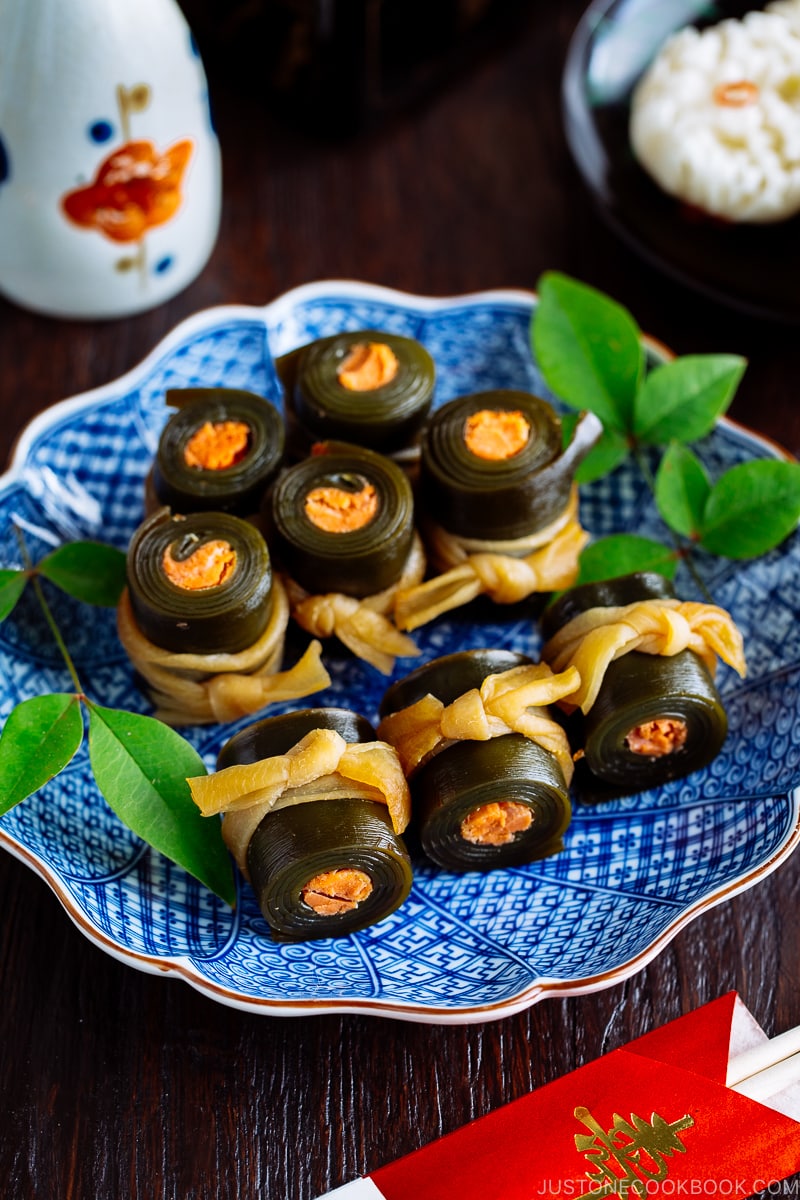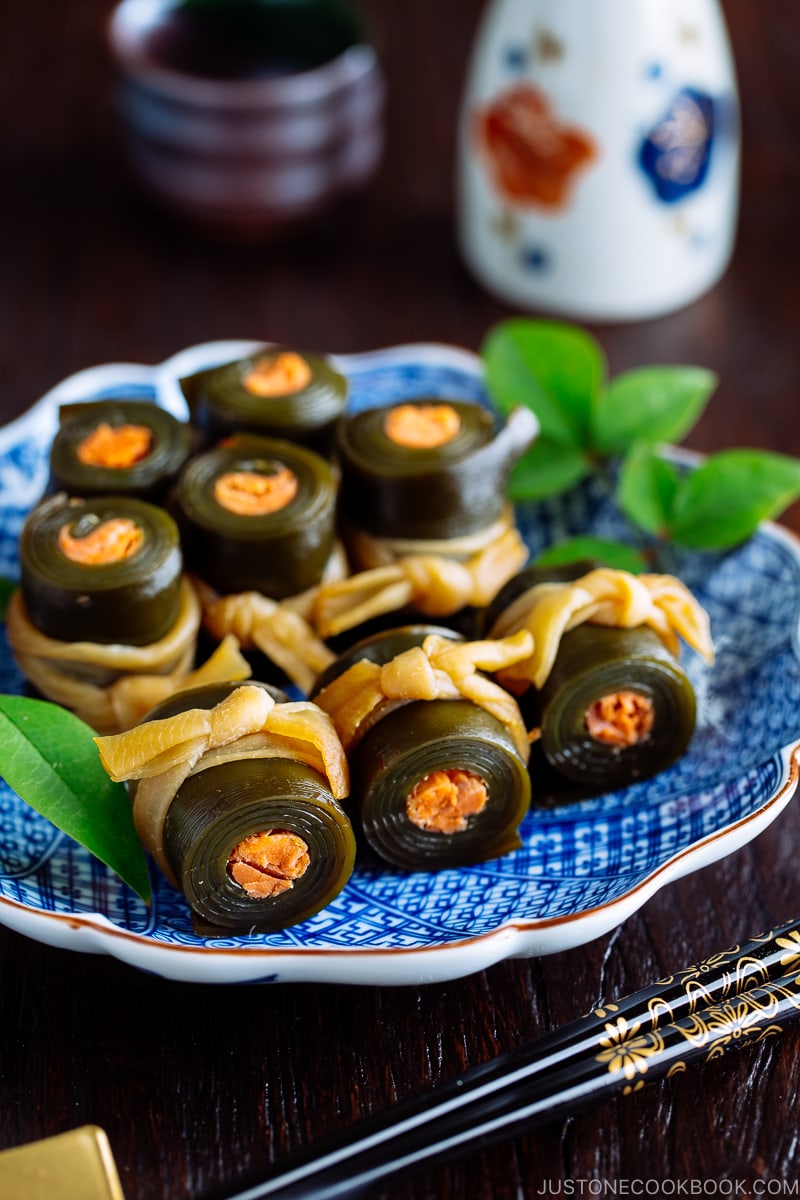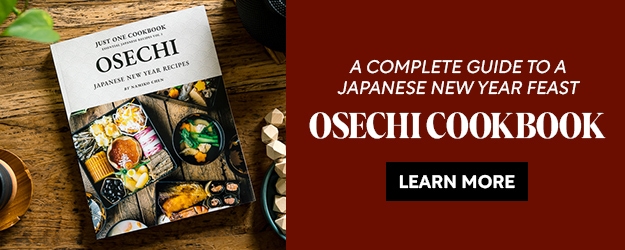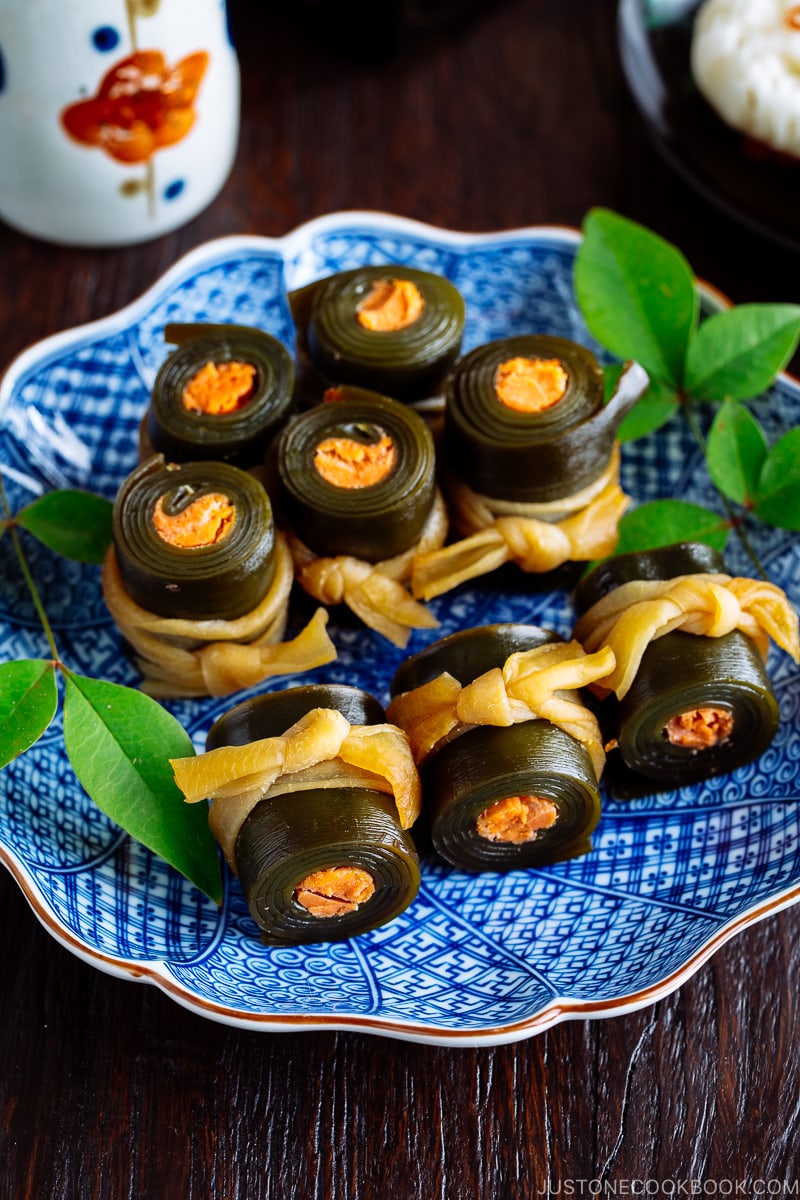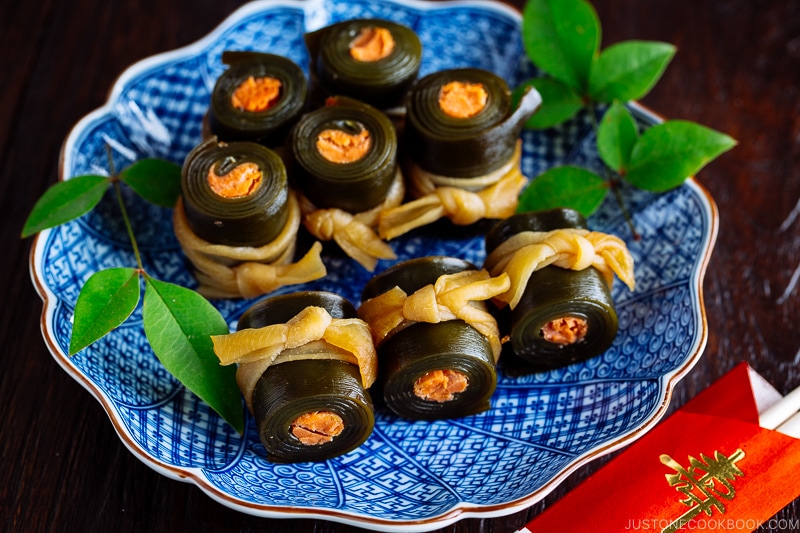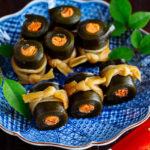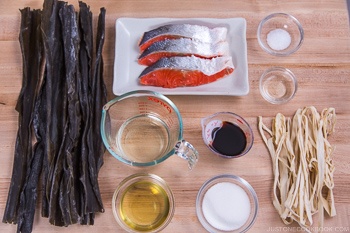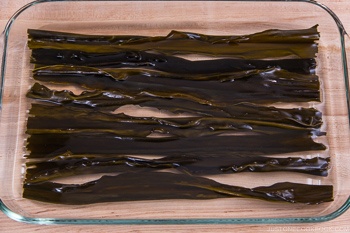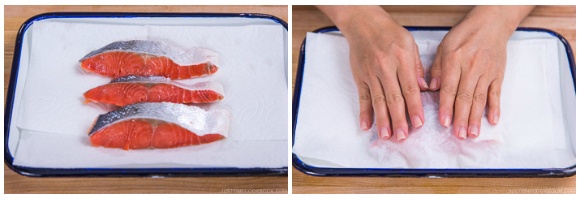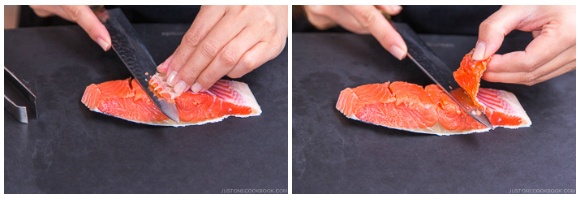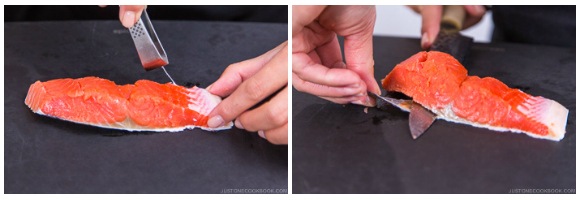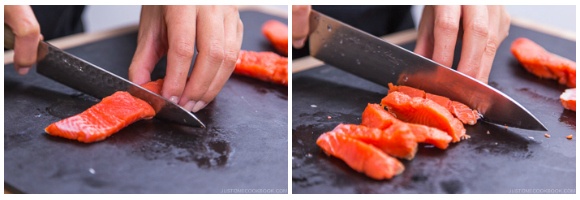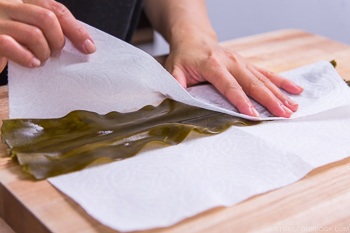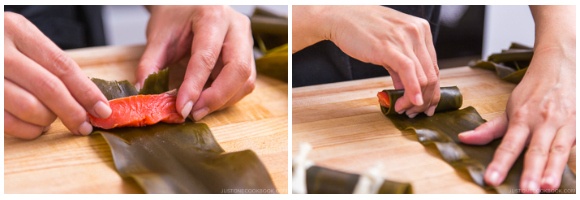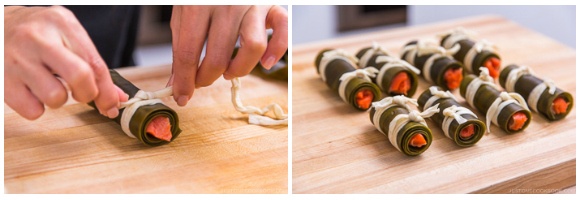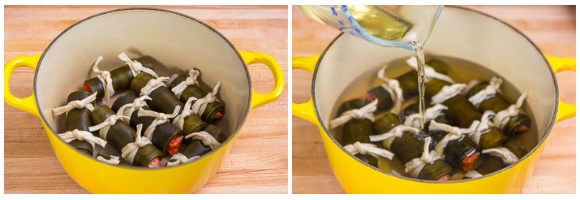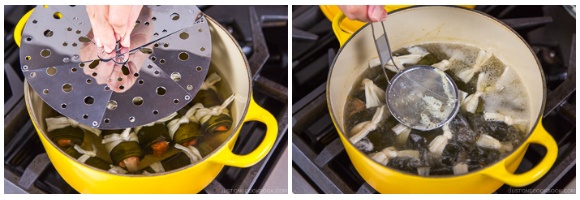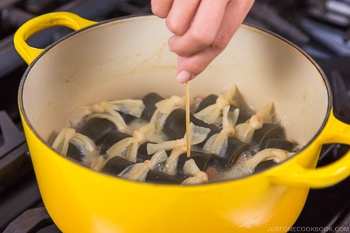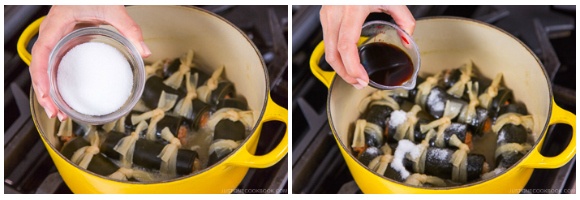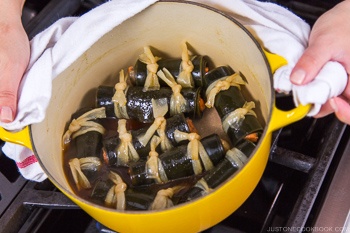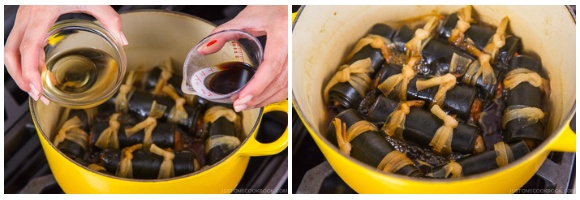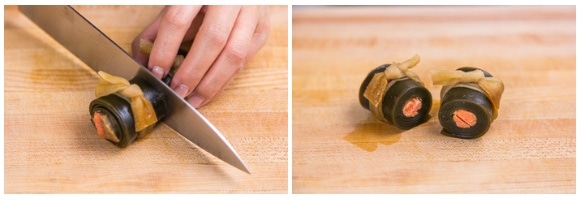Osechi Ryori (Japanese New Year Dishes) is not complete unless Kobumaki (昆布巻き) is packed in the Osechi box. Kobumaki is basically umami-rich kombu (edible kelp) that’s rolled up and simmered in dashi soy sauce. Today’s dish Salmon Kombu Roll (鮭の昆布巻き) is a fancy version of Kobumaki that features a salmon fillet tucked snugly in the center of the kombu roll. Not only it’s one of the popular Osechi Ryori dishes to welcome the new year, but it also makes a fantastic meal to enjoy on its own.
Salmon Kombu Roll – Auspicious Food
As I mentioned in my Osechi Ryori posts, each ingredient and dish for Osechi Ryori has been carefully selected for its symbolism that carries auspicious meaning to usher in the new year. This Salmon Kombu Roll is no exception. Eating kombu is believed to bring happiness for the new year as kombu (or sometimes called kobu) has the same sound as the Japanese word Yorokobu, which means to be happy and joyful.
Key Ingredients for Salmon Kombu Roll
1. Hidaka Kombu
Japanese kombu is cultivated mostly in Hokkaido (北海道), the northernmost of Japan’s main island, and used quite extensively in Japanese cooking. Although much is not discussed, there are different types of kombu.
Ma Kombu (真昆布) Rishiri Kombu (利尻昆布) Hidaka Kombu (日高昆布) Rausu Kombu (羅臼昆布)
Each kombu has slightly different flavors and textures. Ideally, it’s best to use specific kombu that is called for in each different recipe. For this recipe, Hidaka Kombu works the best as it is tender, more flexible, and easy to fold up. They come in different widths and lengths, so don’t worry too much about making all the kombu rolls in equal size. Some may turn out to be longer, some fatter… they are all made out of love and that’s what makes them special.
2. Kanpyo (dried gourd)
Kanpyo is a Japanese ingredient that you don’t see very often in day-to-day Japanese foods. Typically used in traditional sushi recipes, you may have seen it in Futomaki (Thick Sushi Roll) and Chirashi Sushi. Over here, it is hydrated and used to tie around the middle of Kobumaki, which resembles the pattern of a kimono sash. Kanpyo is a dried ingredient and can be found in the dried food section at your local Japanese grocery store. If you can’t find kanpyo, you can try using toothpicks or cooking twines to secure the rolls while cooking and then remove them before serving.
3. Salted Salmon (Shiozake / Shiojake)
You may wonder why we use salted salmon instead of raw salmon. Since color plays an important role in the presentation for Osechi Ryori, the distinct pink of salted salmon makes the ideal choice to accent the kombu roll. Salted salmon releases less protein while simmering so it doesn’t make the broth or kombu rolls messy. It also has a less fishy taste and the flesh is much firmer for wrapping. You can find salted salmon in Japanese grocery stores, so if you live near one, check out the store to save time from making your own Salted Salmon. Otherwise, you can make salted salmon on your own. I highly recommend making a big batch as they are so delicious and you can also make Salmon Fried Rice and Sanpeijiru (Salmon Soup) with the salted salmon. If you decide to use raw salmon, use 2 tablespoons of sake to sprinkle over salmon to desalinate salted salmon. Sake removes and masks the fishy smell, and this might help a little bit. Do take note that regular cooked salmon will not work well in making kombu rolls as it may have albumin formation (white foam) which can ruin the appearance of the dish.
Skip the Salmon for Vegetarian/Vegan Kombu Roll
If you prefer a vegetarian/ vegan version, you can definitely do without the salmon and just roll up the kombu itself without any filling. In Osechi, Kobumaki 昆布巻きwith or without filling are both common and equally delicious. With an emphasis on beauty and fine details, these Salmon Kombu Rolls are the beautiful exemplification of traditional Japanese cuisine. I hope you enjoy making this recipe. If you wish for more happiness in the coming year, follow the Japanese tradition, and eat more kombu dishes on New Year’s Day! Wish to learn more about Japanese cooking? Sign up for our free newsletter to receive cooking tips & recipe updates! And stay in touch with me on Facebook, Pinterest, YouTube, and Instagram.
